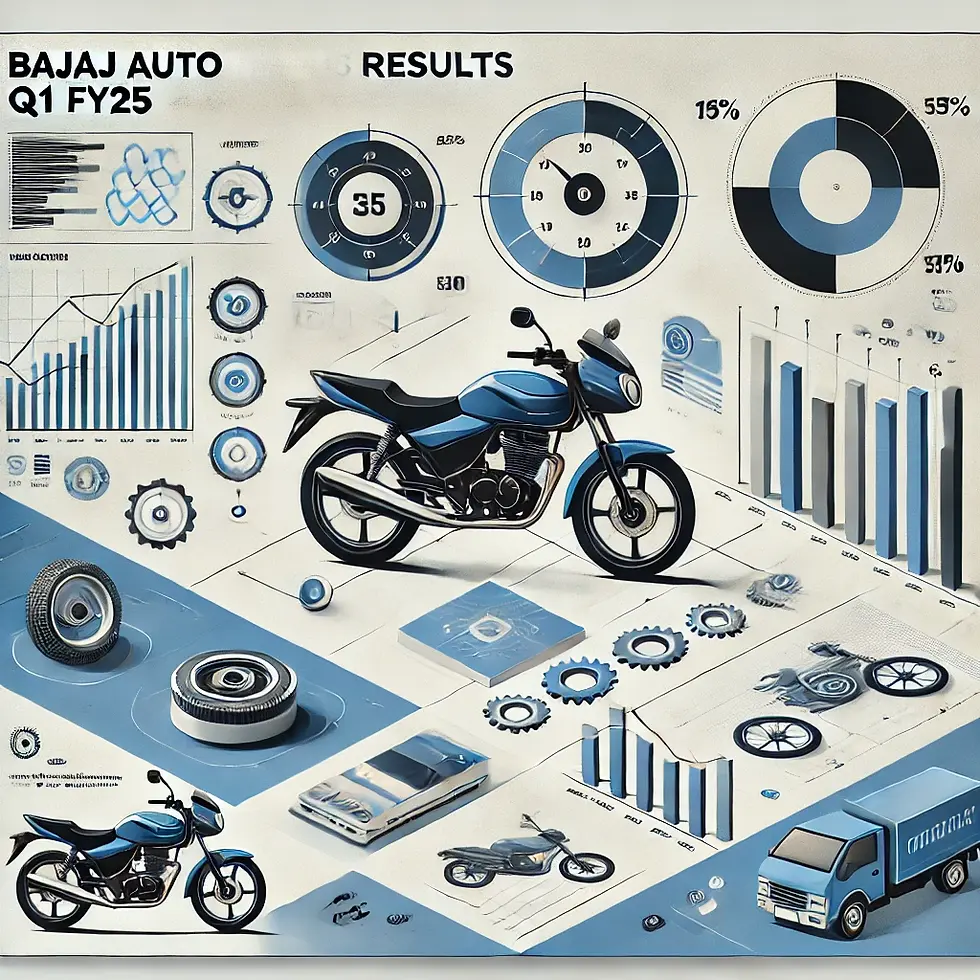How does Bajaj Auto's customer-centric approach influence its market share growth
- nvshah0610
- Jul 28
- 2 min read
Bajaj Auto's recent market performance has been significantly shaped by intense industry competition and various market disruptions, impacting both its market share dynamics and strategic responses.
Competitive Pressure in Key Segments:Bajaj Auto faced some erosion of market share, particularly in the crucial 125cc+ motorcycle segment, which accounts for a large portion of the domestic market. This erosion is attributed mainly to the timing of competitive product launches versus Bajaj’s own launches. The company notes that when competitors launch new features or products first, Bajaj experiences short-term market share decline but aims to regain ground by quickly introducing feature-rich updates and new models. Bajaj has been actively working on augmenting its portfolio in the Pulsar series to catch up and surpass competitors with fresh launches planned through FY 2026.
Strategic Pricing vs. Market Share Growth:Bajaj does not view aggressive pricing as a sustainable approach to gaining market share because price wars typically erode profitability. Instead, it calibrates pricing against competitors while balancing growth, market share maintenance, and profitability. This careful pricing strategy helps Bajaj sustain healthy margins despite competitive pressures.
Market and Economic Volatility:The two-wheeler industry in India is growing at a moderate pace (~5-6%), driven mainly by the 125cc+ segment, which Bajaj expects to grow faster (8-12%). However, the market is subject to ups and downs on a quarterly basis due to consumer sentiment, festival seasonality, and macroeconomic factors. Bajaj’s leadership in exports and international markets also faces challenges from disruptions such as volatile demand in regions like Africa, including currency fluctuations and geopolitical issues, especially impacting profitability and volume recovery in those markets.
Product Innovation and Portfolio Refresh:In response to competitive disruptions, Bajaj is swiftly innovating to maintain appeal. Its product pipeline emphasizes feature-rich motorcycles and expansion in both the premium and entry-level 125cc segments. This innovation-led approach is central to countering competitors and adapting to shifts like the increasing demand for electric vehicles and connected features.
Impact of Market Disruption and Supply Chain Factors:Global supply chain disruptions and fluctuations in raw material costs have affected production and margins. Bajaj’s ability to manage costs, optimize supply chains, and introduce digital transformation initiatives has helped it maintain profitability amid competitive and market disruptions.
In summary, Bajaj Auto’s recent market performance reflects active management of competitive pressures through timely product innovation, calibrated pricing strategies, and agility in responding to market disruptions—both domestic and international. While market share experienced some erosion, particularly in highly competitive segments, the company’s proactive product development and balanced approach to growth and profitability position it to regain and enhance its leadership in coming years.
These insights are based on recent company earnings calls, market analyses, and expert commentary from 2024-25.



Comments